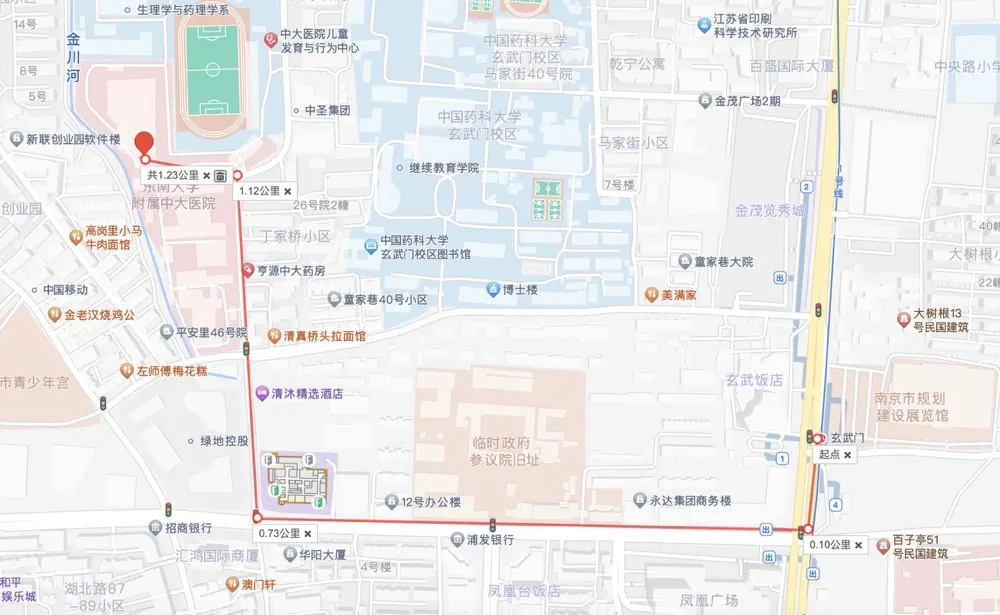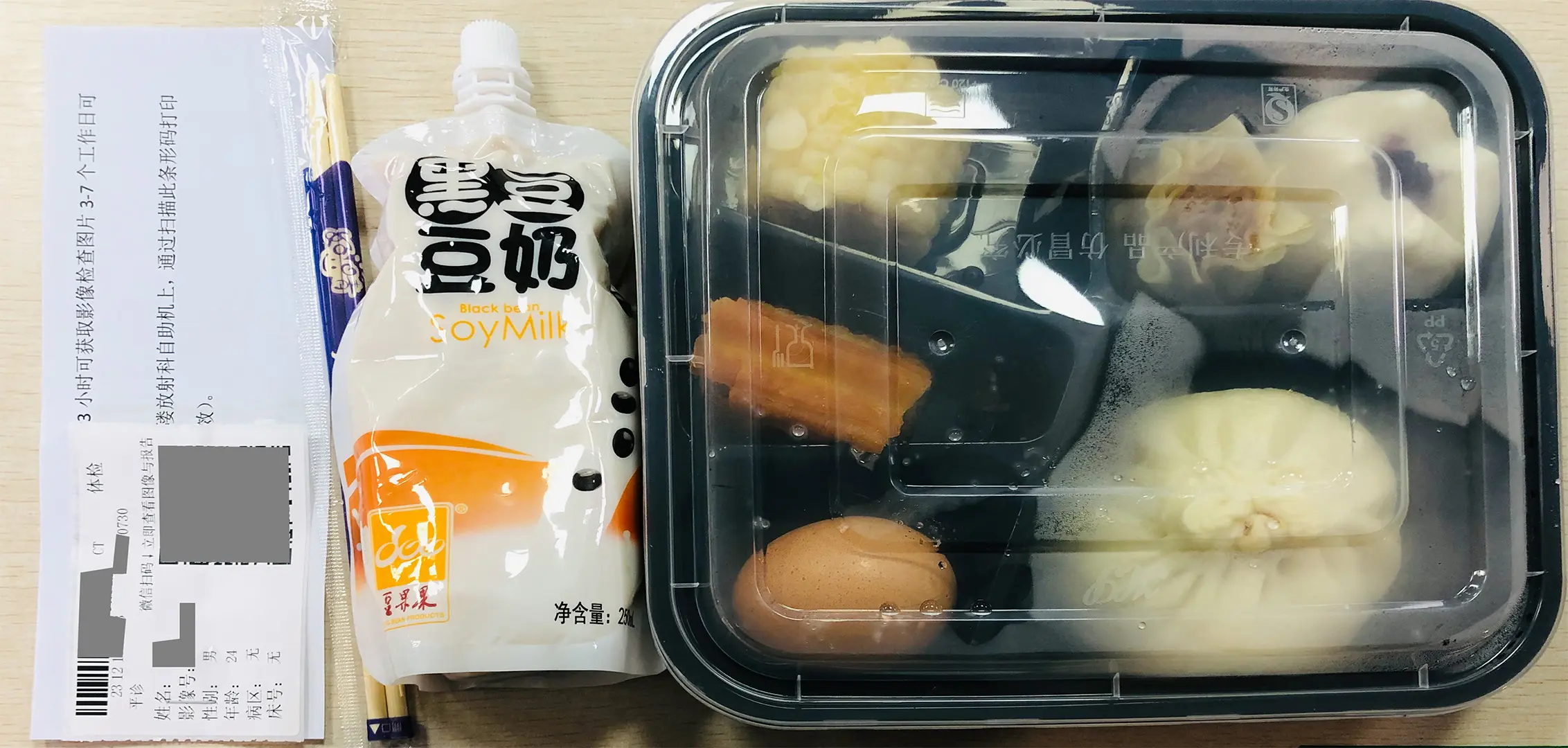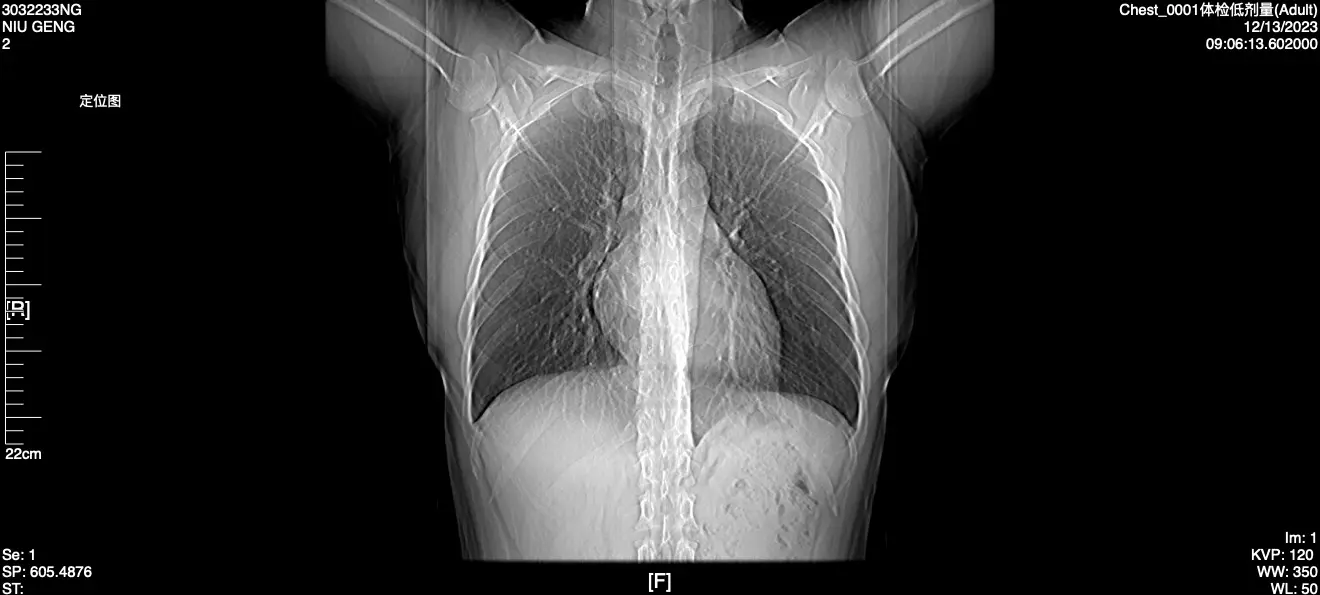Medical Examination
Due to unhealthy lifestyle habits such as high-fat, high-salt, and high-sugar diets, diseases and chronic conditions typically seen in the elderly are increasingly affecting younger people.
In this context, regular medical check-ups have become a crucial tool. They not only help us understand our physical condition in depth but also reveal potential health issues, guiding us to adjust our lifestyle for better health. Early detection and treatment before problems worsen are key benefits of these check-ups.
This approach allows us to effectively address health challenges brought on by modern lifestyles, maintaining a good state of physical and mental health.
Choosing Medical Examination Packages
Firstly, we need to decide on the type of medical examination package to choose. The price range for different packages varies widely, from a few hundred yuan for basic entry-level check-ups to more than ten thousand yuan for comprehensive, high-end packages. Beyond cost considerations, we should also choose based on personal factors such as age, gender, medical history, and family health history.

Examination Process
Preparation for the examination should start three days in advance:
- Maintain a normal diet for three days before the examination, avoiding alcohol and high-fat, high-protein foods.
- Do not eat after 8 PM the day before the examination to ensure fasting for 10-12 hours before blood tests.
- Avoid eating and drinking on the morning of the examination.

Nanjing Zhongda Hospital
Upon arrival at the Nanjing Zhongda Hospital Physical Examination Center, the first step is to discuss with the doctor to finalize the examination items and complete the payment process.
Then, fasting blood tests are conducted, followed by urine collection. Drinking plenty of water before ultrasound examinations is necessary to ensure a full bladder. Unfortunately, I didn’t hydrate sufficiently, leading to an inadequately filled bladder during the ultrasound.
After each examination, the doctors note the next department to visit on the examination sheet, making it easy to follow the process. The entire testing procedure took about two hours.
After completing the examination, a complimentary breakfast is provided.

Examination Report
Although the hospital mentioned it might take a few days for the report, my examination report was ready in just one day. I could query and download it via the WeChat public account.
Low-Dose Chest CT Scan
The results of the low-dose chest CT scan have a separate report and chest modeling, which can be viewed on the relevant page.
The chest walls on both sides are symmetric, the mediastinum and trachea are centered, and no abnormal density shadows are observed in the lungs. The lobes, segmental bronchi on both sides, lung hilum, and mediastinal structures appear normal. Slight thickening of both pleura, no abnormalities in the thoracic bones.
No significant abnormalities were found in the low-dose chest CT scan.

Issues Identified
Overweight
Body Mass Index: 24.34 Overweight
Suggested balanced diet, moderate exercise, quitting smoking, limiting alcohol, maintaining psychological balance, regular lifestyle, and periodic monitoring of BMI and body fat percentage. Seek medical advice if necessary.
Risk of Hypertension and Hyperlipidemia
| Item Name | Test Result | Reference Range | Unit | Note |
|---|---|---|---|---|
| Cholesterol | 5.43 | 0.00–6.20 | mmol/L | |
| LDL Cholesterol | 3.32 | 0.00–3.40 | mmol/L | |
| Systolic Pressure | 136mmHg | 120 | mmHg | Slightly Elevated |
| Diastolic Pressure | 79mmHg | 80 | mmHg |
Monitoring and Lifestyle Adjustment: Regular monitoring of blood pressure is advised, especially if there is a family history of hypertension or other risk factors. Lifestyle modifications, such as regular moderate-intensity exercise, maintaining a healthy weight, reducing salt intake, increasing fruits and vegetables, limiting alcohol consumption, and stress reduction, can help control blood pressure.
Medical Consultation: If concerned about blood pressure levels or risk factors, consult a doctor. They may provide further tests and personalized professional advice.
Diet Adjustment: Considering the levels of cholesterol and low-density lipoprotein (LDL), consider a diet low in saturated fats and cholesterol. Focus on foods rich in whole grains, vegetables, fruits, and omega-3 fatty acids.
Regular Check-ups: Continue regular monitoring of blood lipid levels and blood pressure to detect any adverse changes and take appropriate measures.
Elevated Uric Acid
| Item Name | Test Result | Reference Range | Unit | Note |
|---|---|---|---|---|
| Uric Acid | 497 | 202.3–416.5 | μmol/L | ↑ |
Mild increases in uric acid are often due to a high-purine diet, such as animal organs, meat, seafood, and fish. Significant increases can lead to gout, gouty arthritis, and gouty nephropathy. Occasional mild elevation in uric acid may not be clinically significant and can be rechecked. Persistent or significant elevation should be taken seriously, with an endocrinology consultation recommended.
Platelet Distribution Width
| Item Name | Test Result | Reference Range | Unit | Note |
|---|---|---|---|---|
| Platelet Distribution Width | 11.1 | 12–16.5 | FL | ↓ |
Platelet Distribution Width (PDW) is an indicator of platelet size variation, reflecting the uniformity in size of platelets. A lower PDW usually suggests that the platelets are more uniform in size.
A slightly low PDW is generally not considered a serious issue, especially if other platelet-related indices such as platelet count (PLT) are within normal ranges.
PDW levels may fluctuate due to various factors, including physiological factors and technical variations in laboratory tests.
Normal Sinus Rhythm
| Item Name | Test Result | Reference Range | Unit | Note |
|---|---|---|---|---|
| ECG | P wave: (-) QRS complex: (-) ST segment: (-) T wave: (-) | Normal Sinus Rhythm |
Normal sinus rhythm is generally considered a manifestation of a normal heart rate. On an electrocardiogram (ECG), it indicates that the heartbeat originates from the heart’s natural pacemaker, the sinus node, at a regular rhythm and rate. This is a sign of normal heart function in adults and healthy children.
Post-Examination Lifestyle Plan
-
Weight Loss Goal:
- Aim to reduce the Body Mass Index (BMI) to around 22 and maintain a body fat percentage of about 15%.
-
Lifestyle Adjustments:
- Balanced Diet: Increase intake of vegetables and whole grains, decrease high-calorie, high-fat, and high-sugar foods.
- Increased Exercise: At least 150 minutes of moderate-intensity aerobic exercise per week, plus two days of muscle-strengthening activities.
- Limit Alcohol: Reduce alcohol intake and avoid drinking if possible.
- Psychological Balance: Use meditation, yoga, or other relaxation techniques to reduce stress.
-
Health Monitoring:
- Regular monitoring of blood pressure, cholesterol, and uric acid levels.
-
Dietary Adjustments:
- Reduce the intake of high-purine foods, such as animal organs, certain seafood, and red meat.
- Increase the consumption of foods rich in omega-3 fatty acids, such as deep-sea fish, and fiber-rich foods, like fruits and vegetables.
By implementing these comprehensive measures, the plan aims to gradually improve overall health and reduce the risk of chronic diseases.
Medical Examination - Chinese version
由于不健康的作息习惯和高油、高盐、高糖饮食等多种因素,一些通常出现在老年人身上的疾病和慢性病,现在越来越多地出现在青年群体身上。
在这种情况下,定期体检成为了一个至关重要的工具。它不仅能帮助我们深入了解自己的身体状况,还能揭示潜在的健康问题,从而引导我们调整生活方式,以促进健康。它能使我们在问题尚未恶化之前进行早期发现、早期治疗。
通过这种方式,我们能更有效地应对现代生活方式带来的健康挑战,保持良好的身心状态。
体检项目选择
首先,我们需要确定选择哪类体检项目。不同体检项目的价格范围很广,有几百元的入职体检,还有上万元,包含众多项目的高端体检。在成本限制之外,我们还需根据个人的年龄、性别、既往病史和家族病史等来选择合适的体检项目。

体检流程
体检需要提前三天进行准备:
- 体检的前三天保持正常饮食,勿饮酒及食用高脂肪、高蛋白类食物。
- 体检前一天晚餐8点后不再进食,保证空腹10-12小时抽血检验。
- 体检的当日早晨禁食、水。

南京中大医院
到达南京中大医院体检中心后,首先需要与医生交流,确定将要进行的项目内容,并完成支付流程。
之后先进行空腹抽血,并领取尿管进行尿液采集。在进行彩超检查前,需要大量饮水以保持膀胱的充盈状态。不幸的是,我未能及时补充足够的水分,导致在彩超检查过程中膀胱未能充分膨胀。
体检过程中,每项检查后的医生都会在体检单上注明下一项检查的科室位置。因此,只需按照体检单上的指示依次进行各项检查即可。整个测试过程大约用时两小时。
完成体检之后,还有赠送的早餐领取。

体检报告
尽管医院说需要几天才能出报告,不过我的体检报告一天后就完成了,可以在微信公众号上进行查询和下载。
胸部低剂量CT平扫
其中的胸部低剂量CT平扫结果会有单独报告和胸部建模,可以在相关页面上进行查看。
两侧胸廓形态对称,纵隔及气管居中,肺内未见异常密度影。双侧肺叶、段支气管形态未见异常,两侧肺门及纵隔结构未见异常。双侧胸膜稍增厚,胸廓诸骨未见异常。
胸部低剂量CT平扫未见明显异常。

问题
超重
体重指数:24.34 超重
建议平衡膳食,适量运动,戒烟限酒,心理平衡,生活规律,定期监测体重指数及体脂率。必要
时在医生指导下进行治疗。
高血压风险、高血脂风险
| 项目名称 | 检查结果 | 参考范围 | 单位 | 提示 |
|---|---|---|---|---|
| 胆固醇 | 5.43 | 0.00–6.20 | mmol/L | |
| 低密度脂蛋白 | 3.32 | 0.00–3.40 | mmol/L | |
| 收缩压 | 136mmHg | 120 | mmHg | 正常高值 |
| 舒张压 | 79mmHg | 80 | mmHg |
监测与生活方式调整:建议定期监测血压,特别是如果您有高血压的家族史或其他风险因素。生活方式的调整,如定期进行中等强度的运动、维持健康体重、减少盐的摄入量、增加水果和蔬菜的摄入量、限制酒精摄入量以及减少压力,都有助于控制血压。
医疗咨询:如果您对血压水平或风险因素感到担忧,建议咨询医生。医生可能会提供进一步的检查和专业的个性化建议。
饮食调整:鉴于您的胆固醇和低密度脂蛋白(LDL)的水平,考虑采取低饱和脂肪和低胆固醇的饮食。加强对富含全谷物、蔬菜、水果和富含omega-3脂肪酸的食物的摄入。
定期检查:继续定期检查血脂水平和血压,以便及时发现任何不良变化,并采取相应措施。
血尿酸增高
| 项目名称 | 检查结果 | 参考范围 | 单位 | 提示 |
|---|---|---|---|---|
| 血尿酸 | 497 | 202.3–416.5 | μmol/L | ↑ |
轻度尿酸增高多因高嘌呤饮食所致,如动物内脏、肉类、海鲜、鱼类等;明显增高则可导致痛风 、痛风性关节炎、痛风性肾病等。偶尔一次检查发现尿酸轻度增高,不一定有临床意义,可以复 查,如持续或明显增高,应引起重视,内分泌科就诊。
血小板分布宽度
| 项目名称 | 检查结果 | 参考范围 | 单位 | 提示 |
|---|---|---|---|---|
| 血小板分布宽度 | 11.1 | 12–16.5 | FL | ↓ |
血小板分布宽度(PDW) 是血小板大小变异的一个指标,它反映了血小板的大小不一致性。PDW较低通常意味着血小板的大小比较一致。
PDW指标略低通常不被视为一个严重问题,特别是如果其它血小板相关指标如血小板计数(PLT)等都在正常范围内。
PDW指标可能因多种因素波动,包括生理因素和实验室测试的技术差异。
窦性心律
| 项目名称 | 检查结果 | 参考范围 | 单位 | 提示 |
|---|---|---|---|---|
| 心电图 | P波: (-) QRS波群: (-) ST段: (-) T波: (-) | 窦性心律 |
窦性心律通常被视为正常心率的一种表现。在心电图(ECG)上,窦性心律意味着心跳是由心脏的自然起搏点,即窦房结(sinus node),以正常的节奏和速度发起的。这是成年人和健康儿童心脏正常功能的标志。
后续生活计划
-
减重目标:
- 将体重指数(BMI)降至22左右,并控制体脂率在15%左右。
-
生活方式调整:
- 平衡饮食:增加蔬菜和全谷物的摄入,减少高热量、高脂肪和高糖的食物。
- 增加运动:每周至少进行150分钟的中等强度有氧运动,加上每周两天的肌肉强化训练。
- 限制酒精:减少酒精摄入,尽可能避免饮酒。
- 心理平衡:通过冥想、瑜伽或其他放松技巧来减轻压力。
-
健康监测:
- 定期监测血压、胆固醇和血尿酸水平。
-
饮食调整:
- 减少高嘌呤食物的摄入,如动物内脏、某些海鲜和红肉。
- 增加富含omega-3脂肪酸的食物,如深海鱼类,以及富含纤维的食物,如水果和蔬菜。
通过这些综合措施,计划逐步改善身体健康,并降低患慢性病的风险。